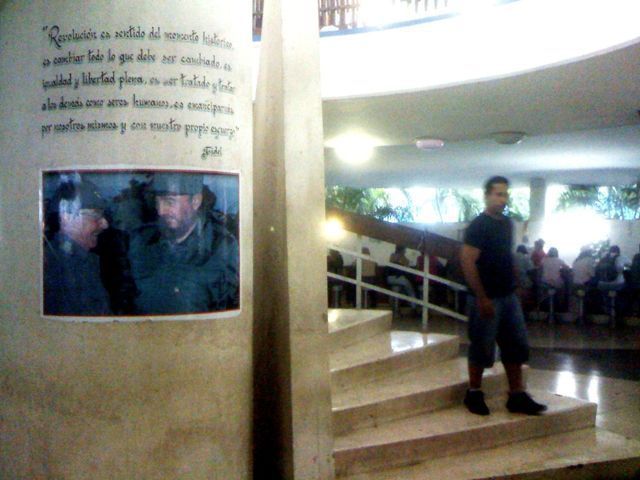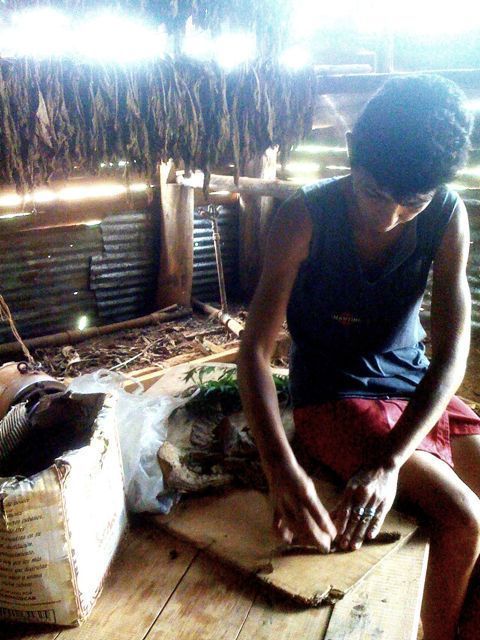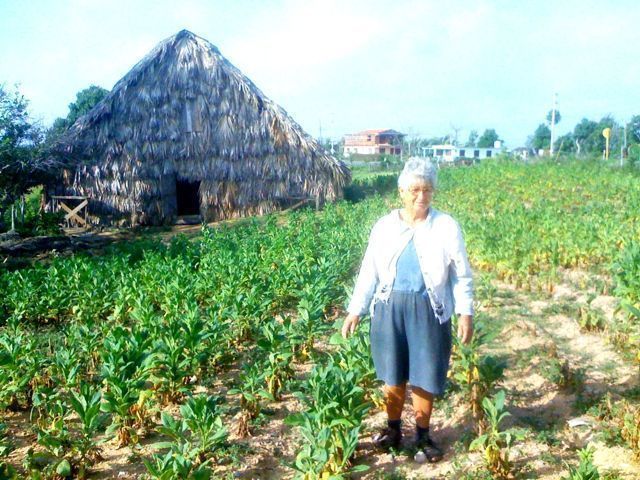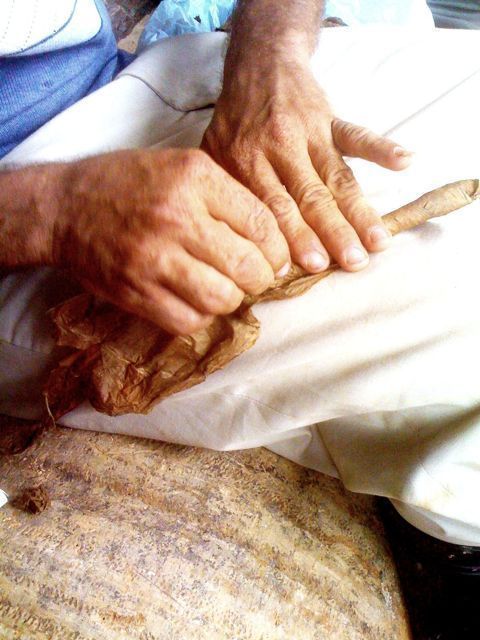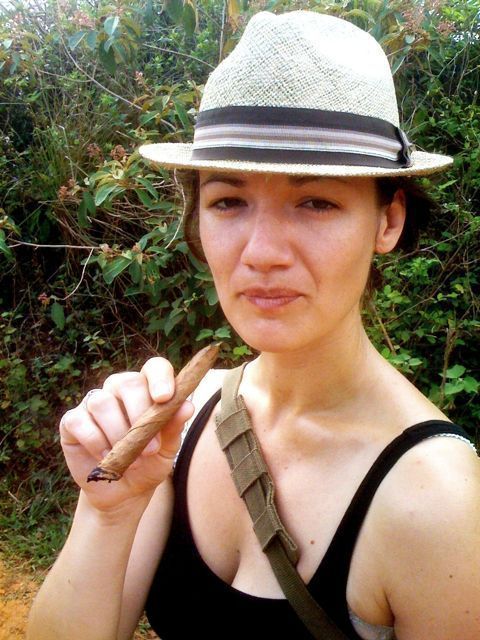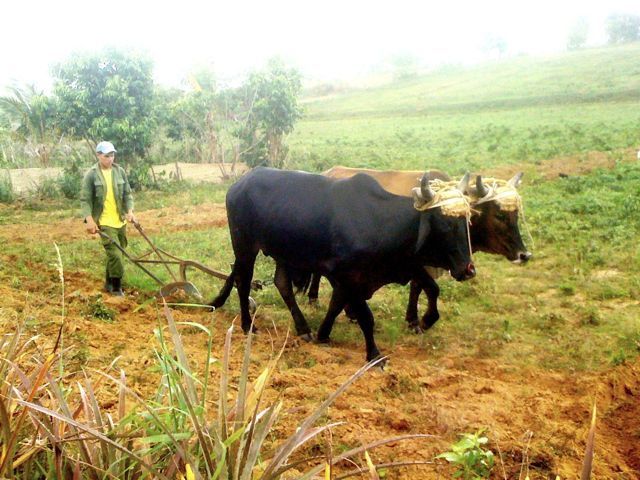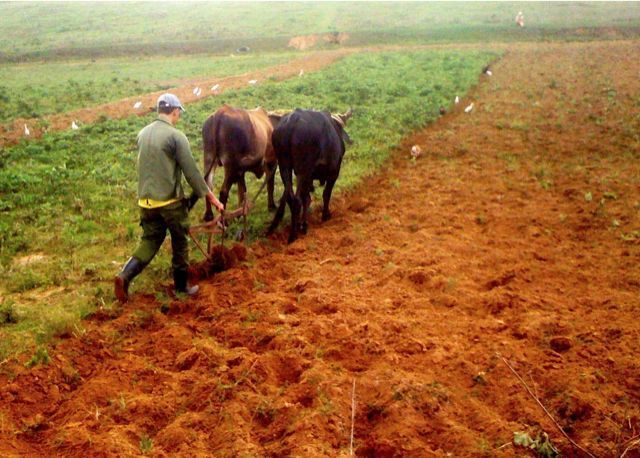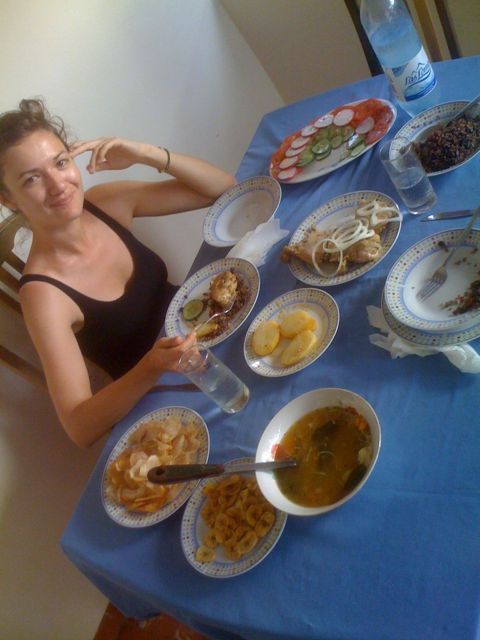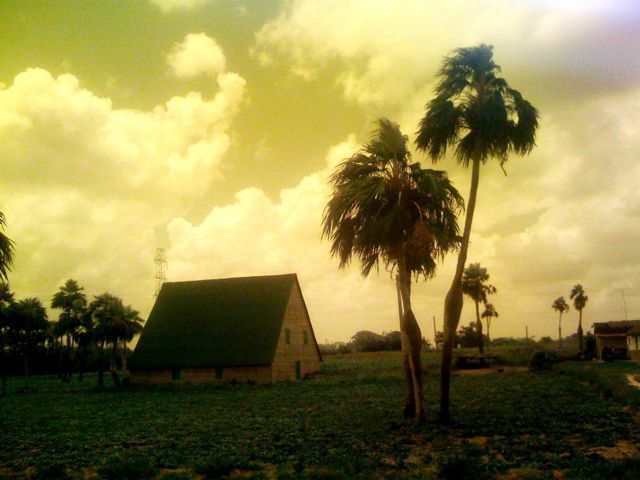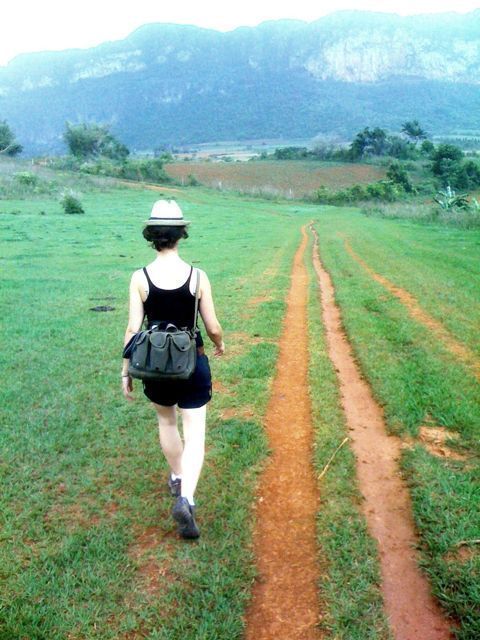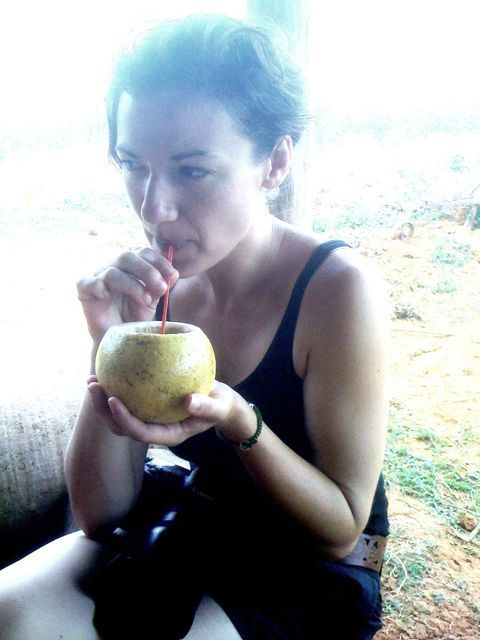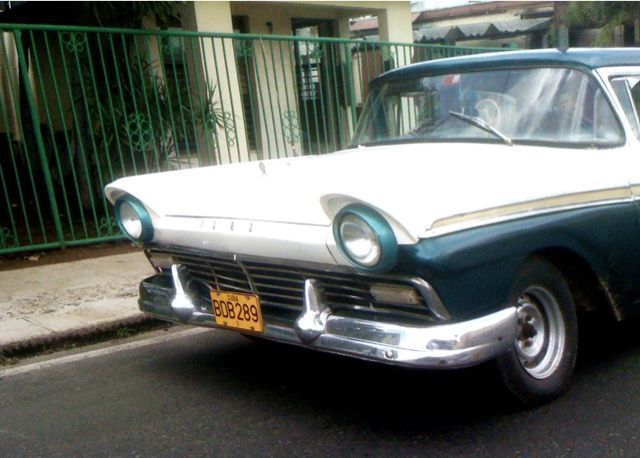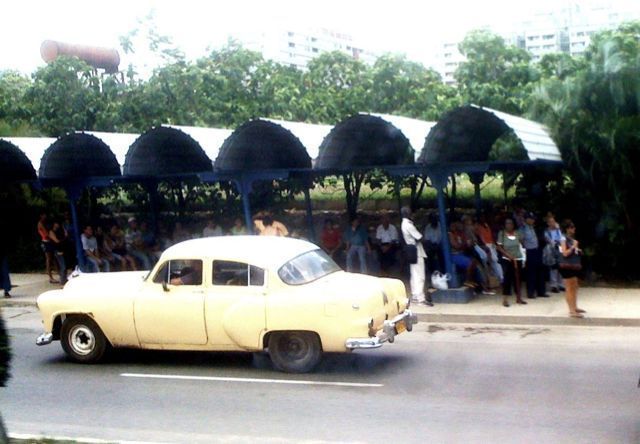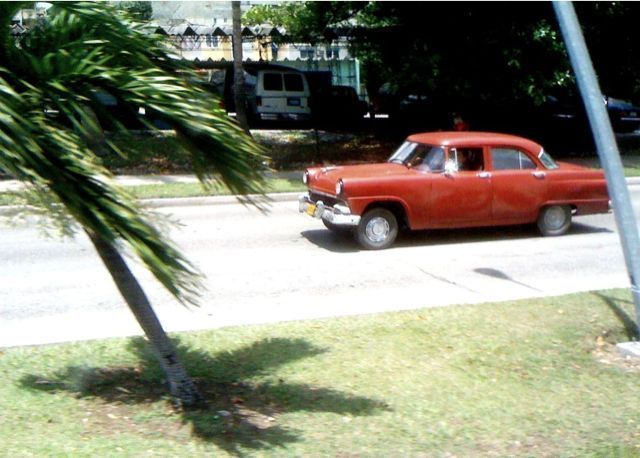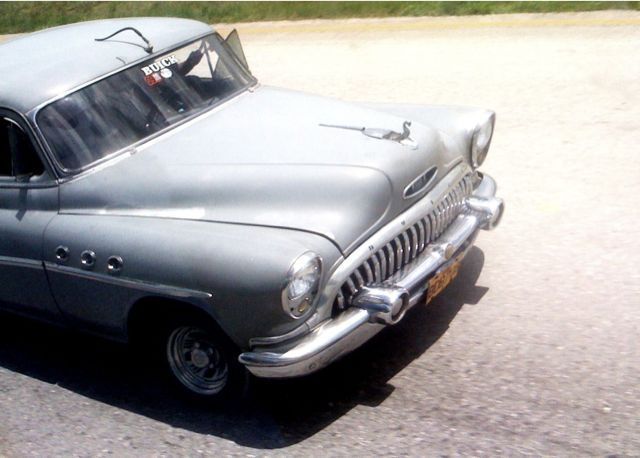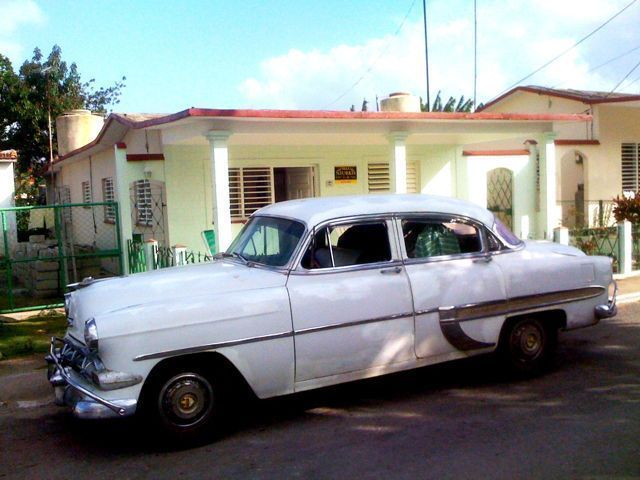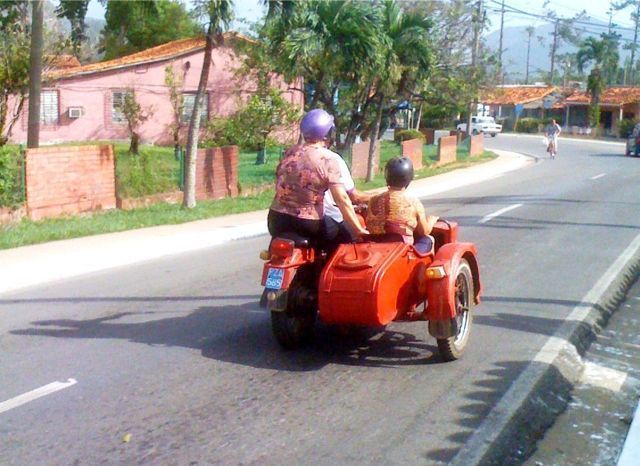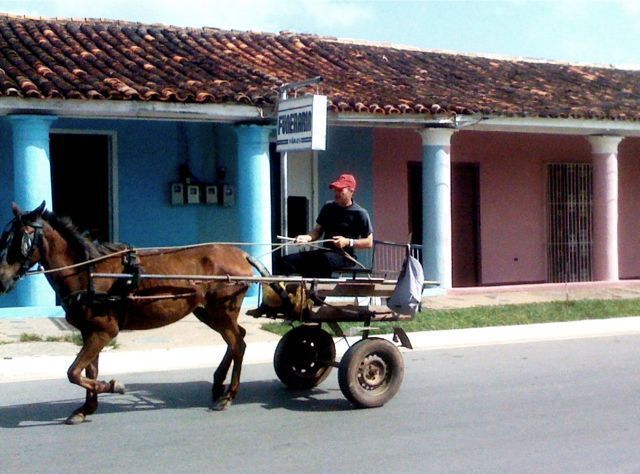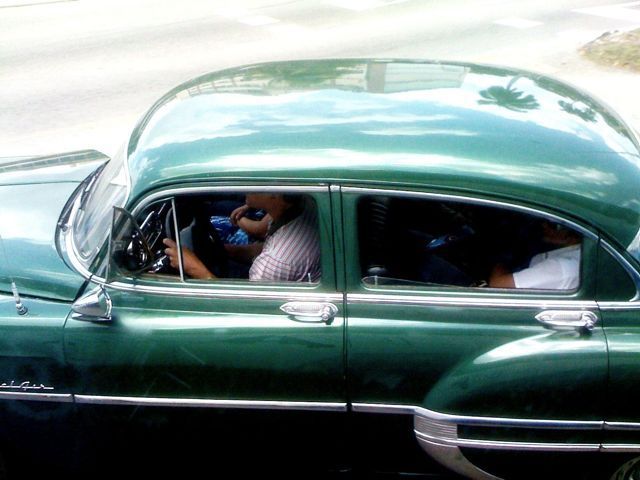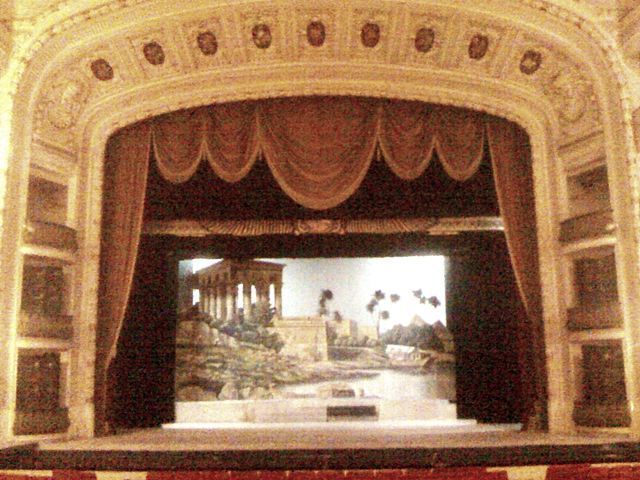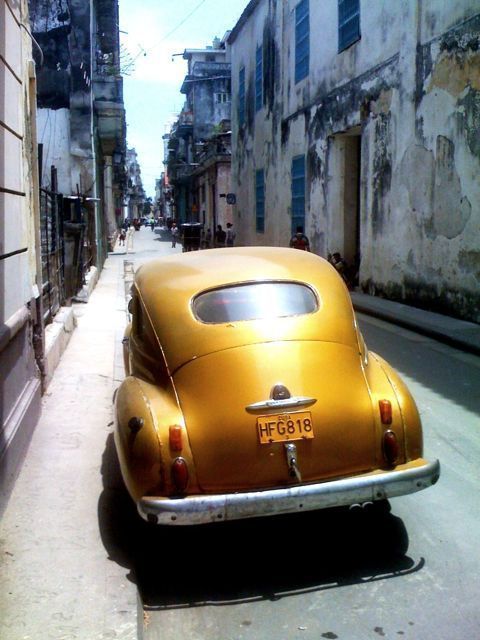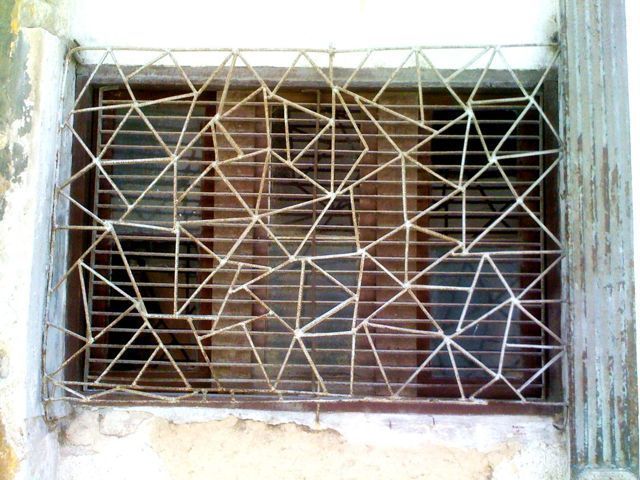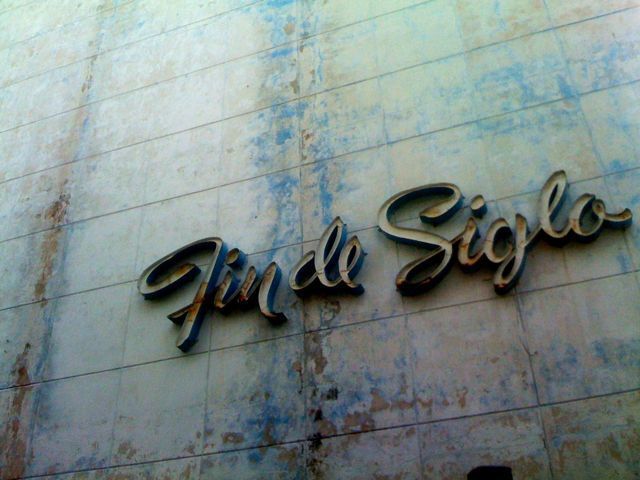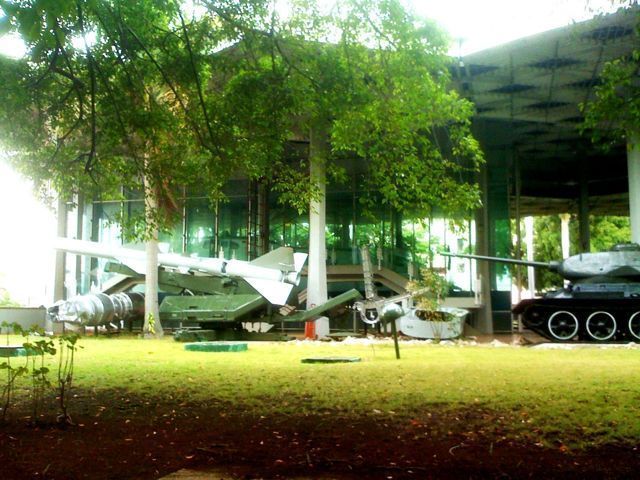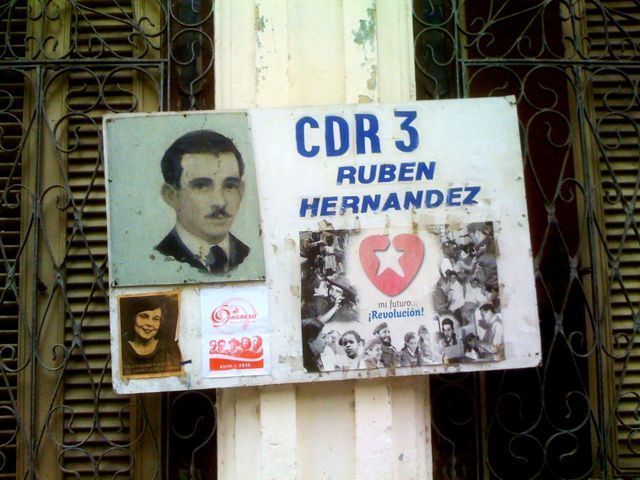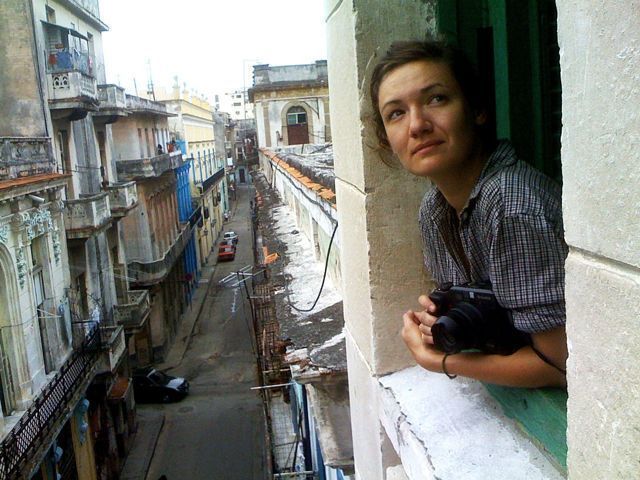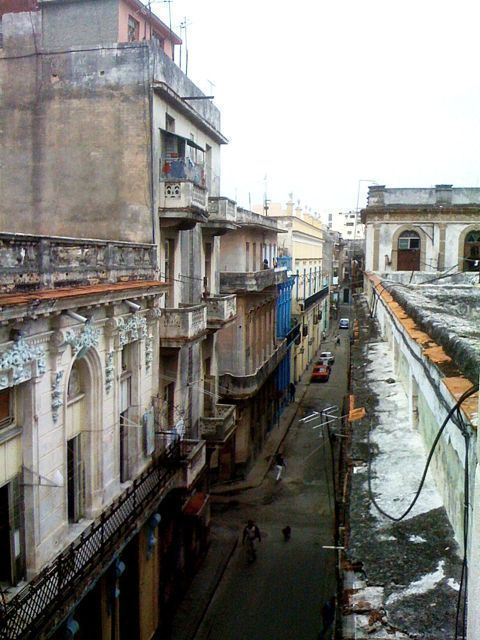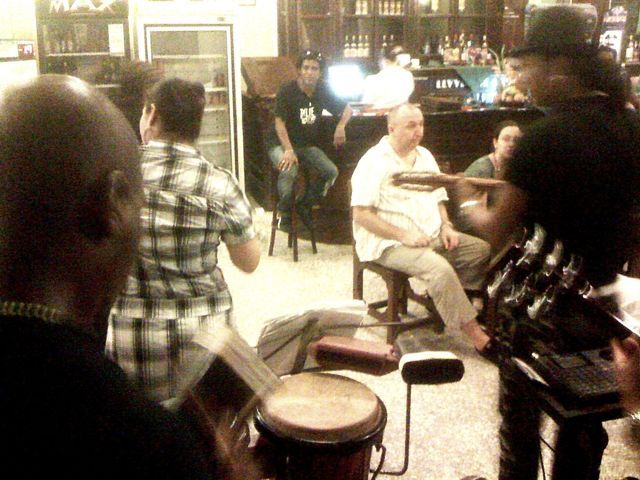Strong rains didn’t deter us from venturing over to central Havana today. We’ve done a lot of walking around and it was nice to head into new territory, even as the rain increased and the streets became less navigable.
By the time we arrived we were the only tourists for miles. Copellia is like some sort of ’2001: A Space Odyssey’ retro-futuristic circular discus. There are multiple entry points, each with its own long line and unique menu. Guards attempted twice to redirect us outside to the streetfront icecream van for tourists (paying top CUC for the same product) but we insisted that we were armed with local pesos and managed to enter the compound. It was a 20 minute wait; given that the rain was now monsoonal, I’d hate to come here on a summer’s day!
We were admitted to some stools at the bar that ran the perimeter. Watching our teenage neighbors carefully, we wondered how to order everything off the menu! Alas, of the five different items advertised, we were offered just two icecream flavours; the second one we understood as ‘coco’.
When our four-scoop bowl each of coconut icream, small cookies and caramelesque syrup arrived, we managed to order another bowl each of the second flavour (‘habana’??).
With a glass of water to wash it down, it was perfect. Although the bowls and spoons looked to be of the revolution (quite possibly Che and Fidel had used them in the jungle), the ice cream was a revolution unto itself! The flavors were so clean, fresh and natural, subtle and complex (the second flavour could have been hazelnut, or chocolate, or was it tiramisu – no it must have been
custard coffee) that we each ate our 8 scoops without a thought. It did seem to be what everyone else was doing too. At 5 pesos a serving (just 5 cents per scoop!!) you can understand why we wanted to order everything.
The verdict: it will be a sad day when I have to choose between Copellia icecream and Caliche’s frozen custard (see post ‘Oh my goodness’, April 19).
Admiring the architecture on the way out, I noticed a quote and photo of Fidel on the central column of the structure, supporting the building and the entire concept of Copellia. If this is the revolution then I’m buying a Che Guevara teeshirt from Obispo St tomorrow!
Photos: Looking towards Florida from the seafront ‘Malecon’:
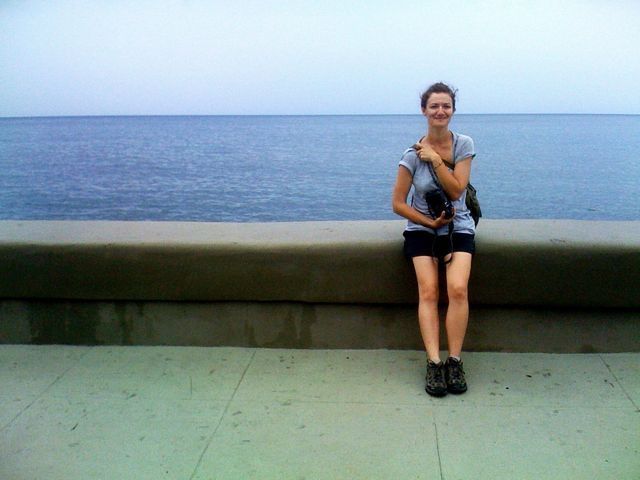
Copellia’s line to get an icecream:.
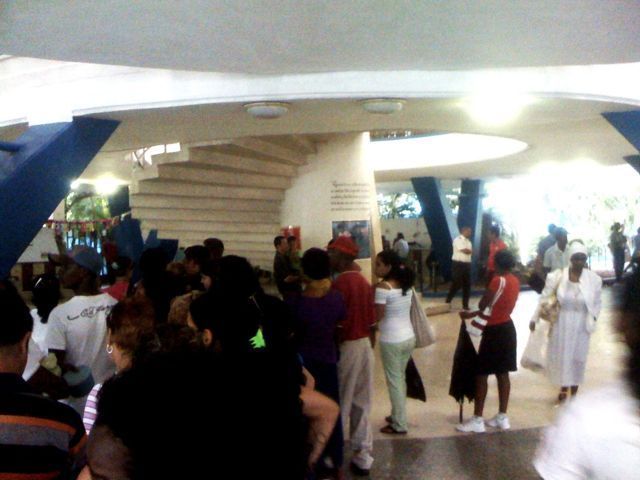
Coco and habana flavours:


Seated at the bar:
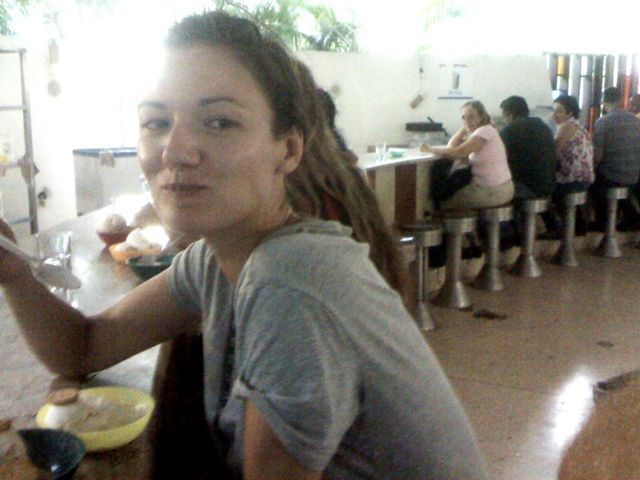
A word from the sponsors on the central column:
